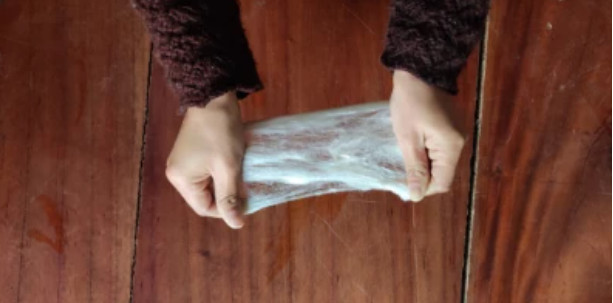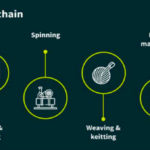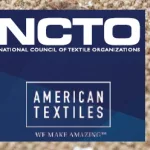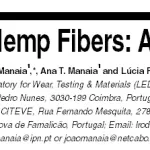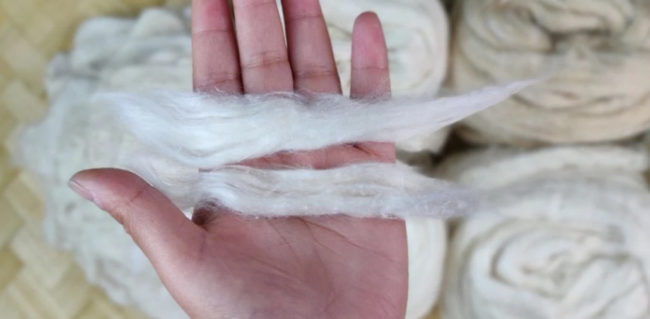
Eri Silk Top Long Roving Fiber
Silk is a natural protein fiber produced by the larvae of a moth. It is the only natural filament fiber, one filament from one cocoon can measure 1000 yards! (Filament refers to fibers that are so long they’re usually measured in miles or kilometers – mostly manufactured fibers). Silk production makes up less than 0.2% of the global fiber market, but is still a significant multi-billion dollar industry.
When thinking about sustainability of silk, one has to be aware of risks related to agriculture (the growing of mulberry trees, which silkworms eat), animal rights (silkworms are raised and usually killed in the process of making silk), water consumption, pollution, and impact on workers and their communities.
Generally speaking, silk is considered a more sustainable fiber. It is a renewable resource, can biodegrade, and uses less water, chemicals, and energy than many other fibers. That said, problems can arise with chemical use, animal rights, high energy input, and labor practices.
About 3,000 cocoons are used to make one yard of silk. One hectare of mulberry trees yields 11.25 tons of leaves, producing around 200 kg of cocoons, but just 40 kg of raw silk (even less if the silk is reeled by hand rather than by machine).
Sericulture is the production of silk from raising silkworms. Most silk is farmed, but wild silk is an alternative. Bombyx mori is the species of moth used in commercial silk production. After hundreds of years of selective breeding, the Bombyx mori, also known as the domestic silkworm, has lost its ability to fly, see, camouflage, and fear predators. It is completely dependent on humans for its survival and no longer exists in the wild. Wild silk, on the other hand, is cultivated from moths that live in the wild. There are varying types of wild silk depending on the type of moth, plants they eat, and regions in which they live. Some wild silks are naturally colored yellow, orange, or green. Scientists are exploring how to produce these colored silks naturally in commercial production so the use of chemical dies would not be required.
Silk production originated in China, where the oldest evidence of silk made by silkworms has been found buried in 8,500-year-old tombs. Historically, the trading of silk for other commodities led to a vast trading network that we now call the silk road that contributed to globalization and the sharing of knowledge, the arts, language, and religion which helped to shape many global cultures familiar to us today.
Sustainability Considerations
Silkworms are usually killed in silk production
Most silkworms are killed in their cocoons before maturing into a moth. Peace silk or cruelty-free silk comes from cocoons where moths have been allowed emerge from their cocoons. Unfortunately, the Bombyx mori moth used in most commercial silk production will barely survive after emerging from its cocoon. Wild silk cocoons are harvested after the moth has left the cocoon and are found in open forests. The only challenge with wild and peace silk is that it is lower in quality than conventional silk because of the staple length filament threads are cut short. Suggestions: If you are concerned with animal rights or committed to vegan fashion, you should avoid conventional silk and try to source wild silk. Environmental impact of mulberry tree cultivation
In conventional silk production chemical pesticides and fertilizers are sometimes used, though generally mulberry trees do not require their use. Even when chemicals are used in the growing of mulberry trees, they require significantly less chemical inputs than cotton and most other natural fibers. Pesticides, such as dyathin-M-45, can be used in the mulberry plantations to protect saplings. Because mulberry trees loose their leaves annually, available production is limited to one generation each year. Manure-based fertilizers can lead to eutrophication. Eutrophication is when increased nutrient loads to bodies of water (largely through groundwater in the case of fertilizers), leads to harmful algae blooms, dead zones, and fish kills. This is especially an issue in India, which provides subsidies for fertilizers and electricity for silk production. Irrigation consumes both energy and water. One mature mulberry tree will produce enough foliage for 100 silkworms. If 3,000 cocoons go into making one yard of fabric, that’s a lot of mulberry trees! Suggestions: Ideally, mulberry trees should be grown without harmful pesticides or fertilizers and should rely upon natural rainfall for irrigation. Silk production uses high amounts of energy
Large amounts of energy can be used to transport materials along various steps of the process, control temperature in silkworm rearing facilities, and heat water for silk production as well as dying and processing. The most energy-intensive part of the process tends to be cooking the cocoons. Some lifecycle analyses have found that silk is 1000 times more efficient in its energy of formation than polyethylene. Suggestions: Aim to use less and better energy. Silk production uses high volumes of water
Extensive amounts of water are used in reeling and materials processing to clean the silk and remove sericin. Suggestions: Ask your supplier if they have a water treatment and recycling system. If they do not, help them install one. This can lead to future savings for the facility as water can be recycled back into the system, decreasing spending on water. Toxic chemicals may be used in silk production
Formalin and bleach powders may be used as general disinfectants in all stages of sericulture. Toxic chemicals may be used during reeling and materials processing to both clean the silk and remove sericin. It is not uncommon for untreated wastewater to be dumped directly into groundwater, which not only contains chemical toxins, but also biological waste that can contribute to land degradation and eutrophication. Although the use of chemical finishes is relatively low for silk, the use of dyes is high. Silk is a great candidate for using natural dye. Unfortunately, most commercially available silk uses chemical dyes and finishes. Suggestions: The chemical processes involved in silk production are far lower impact that those in conventional cotton production or synthetics. That said; work with your suppliers to eliminate toxic chemicals from your supply chain. Also, ensure that all water is being treated before it is dumped into groundwater. Opt for more sustainable dyes and dye processes. Silk production impacts workers and communities
Silk production is labor intensive and tends to take place in countries with low labor costs. Exposure to chemicals through breathing and skin contact during production and material processing can be extremely harmful to workers’ health if proper equipment and safety precautions are not used. There is evidence of child labor in silk production. That said, silk production is an important livelihood for farmers around the world and can be empowering for workers. As Annie Gullingsrud points out, the silk sector employs about 1 million workers in China, provides income for 700,000 households in India and 20000 weaving families in Thailand. Wild silk can provide a year-round income for tribal people in India and some areas of China. In The Villages of Mexico silk production provide economic freedom for women and boost family income. Efforts to mechanize the production of silkworms could have a pronounced Impact on regions that have traditionally relied on hand labor to produce silk. Suggestions: Work with ethical, fair trade producers, and at the very minimum develop a personal relationship with your suppliers. Minimum age laws are not necessarily the best solution to child labor. Potential impacts during customer use and care
Many silks require dry cleaning. Dry cleaning solvents can harm the environment, and their use and disposal should be restricted. Silks wrinkle easily, and it is recommended to press with steam. As pointed out in Fashion & Sustainability, Design for Change, statistics show that when we steam-iron a garment on a hot setting, we use the same amount of energy as is consumed during washing (though it is much lower when we iron without steam). Some manufacturers use softeners, elastomers, and synthetic resins to reduce wrinkling. Silk must be take care of delicately to ensure longevity. Silk has poor resistance to sunlight, UV, and heat exposure. It is also susceptible to abrasion. Suggestions: Design for hand washing over dry cleaning, an if possible low iron use. Be sure to educate your customers about best consumer care practices. Silk is biodegradable, depending on what is added to it
Untreated silk is completely biodegradable. Things like dye, toxic chemicals, blended fibers and trims can hinder biodegradability. Suggestions: Design for optimal biodegradability. Be sure to educate your customers about how to dispose of the product, or even consider a company take-back program so you can re-use or properly dispose of the products you make.
More Sustainable Options
More sustainable silk options are available at price points slightly higher than conventional silk:
Organic Silk – GOTS certifies multiple organic silk suppliers. To find organic silk you can search the GOTS public database. Peace Silk – Peace silk, also known as cruelty free silk or Ahimsa Silk, comes from cocoons where moths have been allowed emerge from their cocoons. Unfortunately, the Bombyx mori moth used in most commercial silk production barely survives after emerging from its cocoon. We might imagine these moths flying free, but this is not the case. After hundreds of years of selective breeding, it is not intended to live beyond cocoon stage and has lost its ability to fly, see, camouflage, and fear predators. So a peace silk moth will most likely live a short life in captivity during which it may get the opportunity to be used for breeding. Which begs the question – how ethical is it really? There is currently no certification for peace silk. Wild Silk – Wild silk cocoons are harvested after the moth has left the cocoon and are found in open forests.
Fiber Qualities
Silk is one of the strongest natural fibers Silk has good moisture absorption and can be dyed and printed in brilliant colors. It works well with natural dyes. Silk has a nice drape. Good to stay cool in hot weather as well as stay warm in cool weather. Its beautiful natural luster has been emulated in the creation of many manufactured fibers. Silk loses a significant amount of its strength when wet and thus needs to be washed delicately. Silk wrinkles easily and tends to require frequent pressing. Silk does not stretch very much.
How It’s Made
Silk moths are bred and lay eggs on a specially prepared paper. The most common moth for commercial silk is Bombyx mori. When the eggs hatch, the caterpillars, or larvae, are fed fresh, young mulberry leaves. After roughly 35 days the caterpillars are ready to begin spinning their chrysalis, or cocoon. The silkworm produces silk in two glands and forces the liquid silk through two spinnerets (openings in its head) in a figure-8 pattern. The silk strands solidify when they touch the air and are coated with sericin, a water-soluble protective gum. Within a couple days the silkworm will spin roughly a mile of filament and completely encase itself in the cocoon.
According to O Ecotextiles, one cocoon generally produces between 1,000 and 2,000 feet of silk filament, made essentially of two elements: a substance, called fibroin, makes up between 75 and 90% of the filament, and sericin, the gum secreted by the caterpillar to glue the fiber into a cocoon, comprises about 10-25%. Other elements include fats, salts, and wax. Once encased in the cocoon, the silkworms will metamorphosize into a moth. Once their transformation into a moth is complete, they secrete a fluid that dissolves one end of the cocoon so they can emerge. This hole ruins the filament fiber by cutting it short into staple fibers (short fibers centimeters or inches long, as opposed to filament fibers which are generally measured in miles or km).
For this reason, most silkworms used in silk production get killed inside the cocoon before metamorphosis is complete, most commonly using steam. Some silkworms are allowed to metamorphosize, mainly for the purpose of breeding and laying more silkworm eggs. (A Bombyx mori moth will only live for about five days after emerging from the cocoon, during which it will lay roughly 500 eggs.) Silkworms are also allowed to emerge in the production of peace silk. Cocoons are then sorted by size, fiber quality, and defects and brushed to find the end of the filament.
Reeling: Several filaments are gathered together to form a yarn, and are wound onto a reel in a process called reeling, which takes place in a facility called a filature. As filaments are reeled they may be twisted (a process called throwing). How many filaments are used and how many times they are twisted varies depending on the intended use and appearance of the yarn. Reeling can be done either by machine or by hand.
Degumming: Remaining sericin is removed from the silk, causing the silk to lose about 20% of its weight and some of its strength. This process is usually done by soaking the yarn in hot soapy water, but sometimes bleach and other chemicals are used. After it is degummed, the yarn is ready to be dyed.
Weighting: As O Ecotextiles put it: “Silk is sold by weight.
“Weighting” is a textile manufacturing practice peculiar to silk manufacturing and involves the application of metallic salts to add body, luster and physical weight to silk fabric. The reason for adding metals to silk fabric is to increase the weight of the fabric and, because silk fabric sells by the pound, the extra weight increases the selling price of the fabric. Generally, only the finer and more expensive reeled silks are weighted rather than the less costly spun silks By means of weighting the manufacturer can increase the weight of silk by 3 to 4 times. Weighting is done by immersing the silk in a solution rich in tannin, then transferred to iron or tin baths, then washed. Weighting causes the fabric to lose its strength as soon as the weighting is applied. Heavily weighted silk must be made into garments as soon as it is made. Spots develop in the dyes. Saltwater, perspiration and tears cause spots to be formed which seem as if the silk is eaten by acids. Sunlight also attacks weighted silk and can cause silk to fall to pieces.
The silk industry makes a distinction between pure-dye silk and weighted silk. In the pure-dye process, the silk is colored with dye, and may be finished with water-soluble substances such as starch, glue, sugar, or gelatin. But it is not weighted. If weighting is not executed properly, it can decrease the longevity of the fabric by causing it to lose much of its strength and durability, so pure-dye silk is considered the superior product. Also, the metallic salts used to weight silk can cause health risks and problems for some people.” Dyeing: Silk can be dyed either as a yarn or after fabric has been woven. The dyeing part of the process is generally chemical, water, and energy intensive. In wild silk production, cocoons are harvested after the moth has emerged and are usually found in natural forests.
Kinds of Silk
Raw Silk: Also called silk-in-the-gum, raw silk is the yarn freshly reeled from raw filaments. No chemicals or treatments have been added, though sometimes the silk fibers will be soaked in 1% hydrogen peroxide solution for a few hours to refine the creamy color (O Ecotextiles).
Silk Noils: Also known as silk waste, is composed of shorter fibers from inside the cocoon or a cocoon from which a moth has emerged. These can be blended with other staple fibers and spun into a yarn, but spun silk is of lower quality than filament silk.
Wild Silk: Wild silk production is uncontrolled. Moths are usually of different varieties and eat other kinds of leaves, like oak and cherry. The resulting fiber is often brown but can also be green, orange and yellow. Since moths emerge from their cocoons, only spun silk yarn is produced from wild silk (it is not filament silk). According to O Ecotextiles, it may be said that wild silks are in most respects of poorer quality than domesticated silk. They are harder to bleach, and do not take dyes so well. They are generally very uneven in texture, but when made up into fabrics are often more durable than common silks. Wild silks are used principally in the manufacture of pile fabrics such as velvet, plush, and imitation sealskin, and in heavy or rough cloths such as pongee and shantung. While the silkworms of the wild varieties take care of themselves, and therefore do not require the constant labor that must be given to domesticated silk, the expense of gathering is nevertheless high. The wild cocoons must be hunted, trees must be climbed to gather them, and much time may be consumed in collecting comparatively few. On the whole, however, because of the poorer qualities, wild silks are worth considerably less than “tame” silks.”
Tussah Silk: The most common type of wild silk, Tussuh is coarser, darker, and cannot be bleached.
Tasar Silk: A kind of wild silk from India.
Duppioni Silk: When two silkworms spin their cocoons together, the result is Duppioni. The yarn has an irregular diameter.
Ahimsa Silk: Silk is cultivated in India and allows live moths to emerge from their cocoons.
|
Available Standards & Certifications
Global Organic Textile Standard (GOTS)
A Textile Exchange standard, the Global Organic Textile Standard (GOTS) is recognized as the world’s leading standard for textiles made from organic fibers. GOTS covers textile processing, manufacturing, packaging, labeling, exportation, importation and distribution. It does not cover the cultivation of the plant, which is covered by governmental organic standards like the USDA Organic. In order to label an article with GOTS, each site along the GOTS supply chain needs to be certified and the product itself needs to contain a minimum amount of 70% organic fiber material.
Organizations & Working Groups
Nest | Nest is a nonprofit 501(c)(3) building a new handworker economy to increase global workforce inclusivity, improve women’s wellbeing beyond factories, and preserve important cultural traditions around the world. Their artisan partners include silk producers and weavers.
Suggested Reading
- “Fashion Fibers: Designing for Sustainability” by Annie Gullingsrud
- “The environmental benefits and ethical considerations of silk” by Summer Edwards, Tortoise and Lady Grey
Articles
- “Oldest Evidence of Silk Found in 8,500-Year-Old Tombs” By Charles Q. Choi for Live Science, January 10, 2017
- “Taking the Violence Out of Silk” By Margherita Stancati, Jan 2011, India Real Times via The Wall Street Journal
- “Ahimsa Silk: Silk Saree without killing a single silkworm” By Dhimant Parekh, September 11, 2008, The Better India
Interesting Read:
- “Chiara Vigo: The last woman who makes sea silk” By Max Paradiso, September 2015 BBC
- “Genetically engineered silkworms with spider genes spin super-strong silk” By Ed Yong, National Geographic
- “Silkworms: an environmentally friendly delicacy?” On what to do with all those boiled silkworms. From Ecoworldly.com via The Guardian
Reports & Studies
- “Sericulture: An Alternative Source of Income to Enhance the Livelihoods of Small-scale Farmers and Tribal Communities” By B.R. Patil, K.K. Singh, S.E. Pawar, L. Maarse and J. Otte. , Pro-Poor Livestock Policy Initiative – A Living from Livestock
- “Life cycle analysis of cumulative energy demand on sericulture in Karnataka, India.” By Fritz Vollrath, Ronin Carter, G.K. Rajesh, Gunnar Thalwitz, and Miguel F. Astudillo. BACSA International Conference: Building Value Chains in Sericulture (BISERICA 2013)
- “Mulberry and Silk Production in Kenya” By Tuigong DR, Kipkurgat TK and Madara DS School of Engineering, MOI University, Kenya
- “Health Risks in Silk Industry” Journal for International Academic Research for Multidisciplinary Impact Factor 2.417, ISSN: 2320-5083, Volume 4, Issue 5, June 2016.
- “Technology intervention to improve the energy efficiency and productivity of silk reeling sector.” By Dhingra, S., S. Mande, P. Raman, S. N. Srinivas, and V. V. N. Kishore. 2003. Biomas & Bionergy (26):2, 195-203.
- “Demystifying Fertiliser and Power Subsidies in India.” By Gulati, A., and S. Narayanan. Economic and Political Weekly no. 35 (10):784-794
- “Silk and Synthetic Polymers: Reconciling 10 Degrees of Separation” By Holland, C., Vollrath F., Ryan, A. J., Mykhaylyk O., 2012. Advanced Materials no. 24 (1):105-109.
- * This report shows that the work required to produce natural silk fibers is at least ten times less than a classic synthetic polymer, yet still nature produces a fiber with superior mechanical properties. The concept of polymer crystallization is (re)defined and silks are classed as a new nanocomposite state of biological matter called aquamelts.
- “Life cycle assessment of silk and charged silk yarn in I09 company” By B. Sara and M. Tarantini . Ravenna. ENEA (The Italian National Agency for New Technologies, Energy and the Environment) and the European Commission
- “Sustainable silk production” By T.Karthik and R.Rathinamoorthy, Chapter 6 Sustainable Fibres and Textiles, The Textile Institute Book Series 2017, Pages 135-170
- “Sericin – A Unique Biomaterial” By S. K. Rajput and Mukesh Kumar. Singh Uttar Pradesh Textile Technology Institute, Kanpur, India -208001
- “Environmental Investigation And Evaluation Of Sericulture Programme And Ayesha Abed Foundation” By Nasima Akter, Amina Rahman and Mushtaque Chowdhury, 1998 BRAC, Research and Evaluation Division
- “Technology intervention to improve the energy e!ciency and productivity of silk reeling sector” By Sunil Dhingra, Sanjay Mande, P. Raman, S.N. Srinivas, and V.V.N. Kishore Biomass and Bioenergy 26 (2004) 195–203
Examples
Golden Silk: Golden Silk is an artisan enterprise in Cambodia and member of Nest. Founded in 2002, the Golden Silk Pheach Preservation Center is one of the rare remaining fully integrated silk producers in the world. Striving to restore and to safeguard the fabulous Khmer traditional methods and techniques of silk making, Golden Silk Pheach spreads over more than 12 hectares of mulberry trees plantation and workshops. Only producing fully hand-made fabrics, dyed with natural pigments and made out of rare and almost disappearing indigenous yellow specie of silkworm (the Golden Silk Pheach). You can read Nest’s Story about it here.
Ziran | This LA based company uses silk that is called “xiang yun sha” (which translates to “perfumed cloud clothing’ which has been handmade and naturally dyed for 500 years in one small town in China.
Stella McCartney | On her website, Stella McCartney talks about their challenges using Peace Silk and innovating new technologies with Bolt Threads.
Eileen Fisher | Eileen Fisher shares personal stories about silk and their supply chain on their website:
- Read the Story of Silk on the EF website, which explores “How one trip to China took me to the moon and back: insects & dynasties, legend & lore, the life cycle of the silkworm.”
- “Snapshots from the Silk Road” shares personal impressions following silk to its source.
Other Resources
Videos showing silk production:
Bibliography
- Fashion Fibers: Designing for Sustainability by Annie Gullingsrud.
- Textiles textbook by Sara Kadolph
- Fashion & Sustainability, Design for Change by Kate Fletcher and Lynda Grose
- Common Objective (CO) Resources directory
- Higg Material Sustainability Index (Higg MSI)
- H&M and Fashion Positive Emerging Material Innovator
- The Story of Silk from Sichuan Dragon Silks
- Silk from O Ecotextiles
